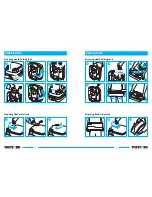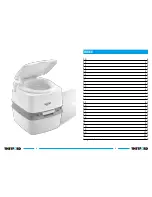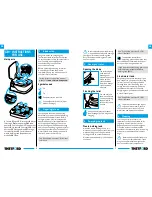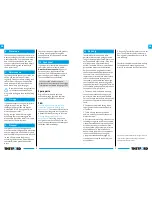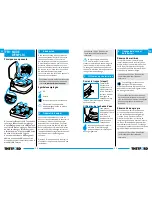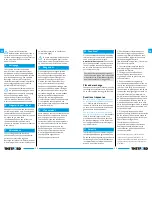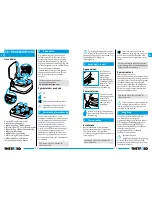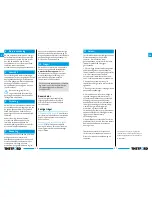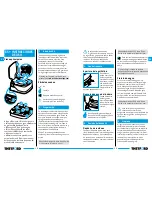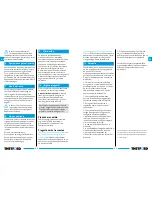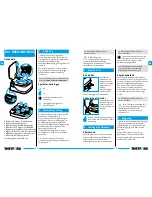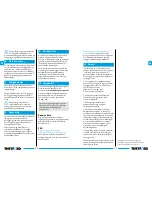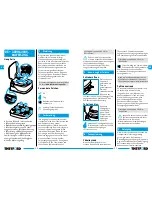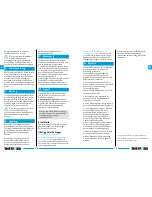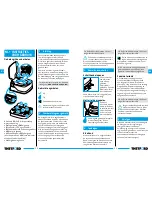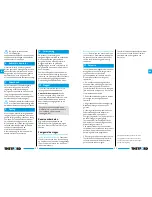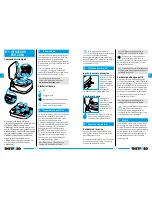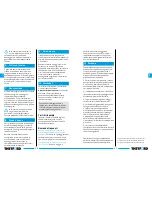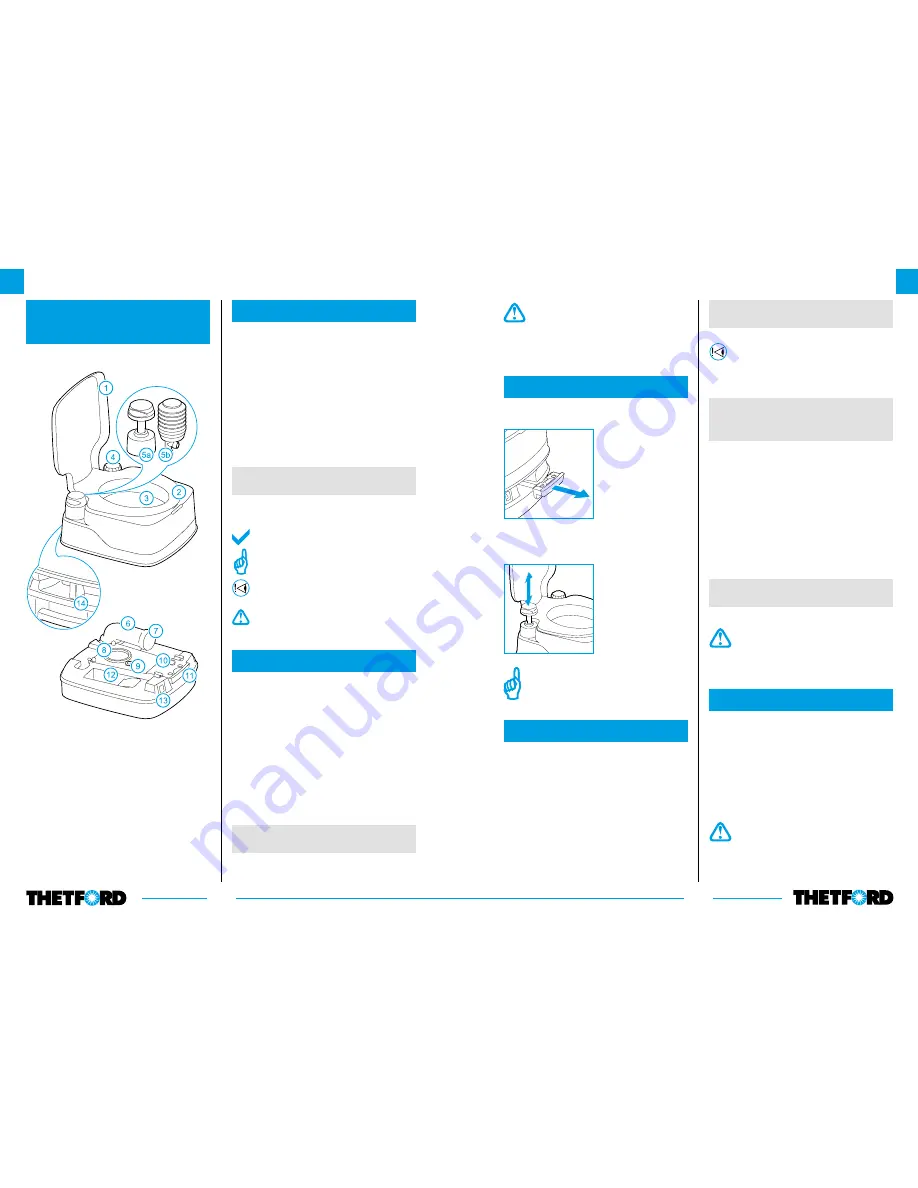
7
6
1 Introduction
Congratulations on selecting this
Thetford portable toilet! You have made
an excellent choice. This portable toilet is
user-friendly, meets high quality
standards and gives you all the
convenience of home.
Before operating and using this toilet
we advise you to read the manual
completely. Keep this manual in a safe
place for future reference.
For the latest version of the manual
please visit
www.thetford-europe.com
Symbols used
OK
Tip
Special attention required
Caution (possible risk of injury or
product damage)
2 Preparing for use
Your portable toilet is made up of two
detachable sections, the waste-holding
tank and the flush-water tank. Before
using this toilet, it is vital that you add
special additives for portable toilets to
both tanks (see last page). Check the
correct dosage on the additive package
and look on the packaging of the toilet for
the capacity of the tanks. Then add 3L of
water to the waste-holding tank and fill
the flush-water tank to the top.
See ‘Quick Guide’ pictures 1-9 for visual
reference.
Never add toilet additives directly
via the blade as this could damage
the lip seal of the waste-holding tank.
Only fill the waste-holding tank via the
pour out spout.
3 Use of your toilet
Opening the blade
The toilet may be
used with the
blade open or
closed. To open the
blade, pull the
valve handle as
described. Always
close the blade
after use.
Flushing the toilet
You can achieve
the most effective
flush by operating
the pump with
three or four short
flushes.
Do not use ordinary toilet paper
(see last page), as this may cause
clogging.
4 Emptying the tank
Waste-holding tank
When the waste-holding tank is full,
disconnect the flush-water tank from the
waste-holding tank. Take your waste-
holding tank to an authorized waste
disposal point and empty it via the pour
out spout.
See ‘Quick Guide’ pictures 10-15 for
visual reference.
To empty the tank without
splashing, press and hold the vent
button with your thumb while the pour
out spout is pointing downwards.
If you want to continue using your toilet
after emptying, prepare the waste-
holding tank again.
Flush-water tank
Only empty the flush-water tank if you
don’t expect to use your toilet for a long
(winter) period. First empty the tank
through the water fill opening, then, to
empty the tank completely, pump the
last drops of water out of the pump.
Emptying is only allowed at an authorized
waste disposal point.
See ‘Quick Guide’ pictures 16-18 for
visual reference.
To prevent water damage to your
caravan or motor home, ensure
that you don’t travel with a full flush-
water tank or with water in the bowl.
5 Cleaning
Just like your toilet at home, it is
important to clean the portable toilet
regularly. You will prevent calcium
deposits and ensure optimal hygiene.
Clean the inside of the bowl and the
outside of the toilet with special cleaning
products for portable toilets (see last
page).
Never use household cleaners to
clean your portable toilet. These
may cause permanent damage to the
seals and other toilet components.
GB • INSTRUCTIONS
FOR USE
Main parts
1
Cover •
2
Seat •
3
Toilet bowl •
4
Water
filler cap •
5a
Piston pump•
5b
Bellow
pump •
6
Pour out spout •
7
Cap pour out
spout •
8
Lip seal •
9
Vent seal •
10
Vent
button •
11
Valve handle •
12
Storage
for toilet fluids •
13
Level indicator
waste-holding tank (dependent on
model) •
14
Clasp
GB
GB


